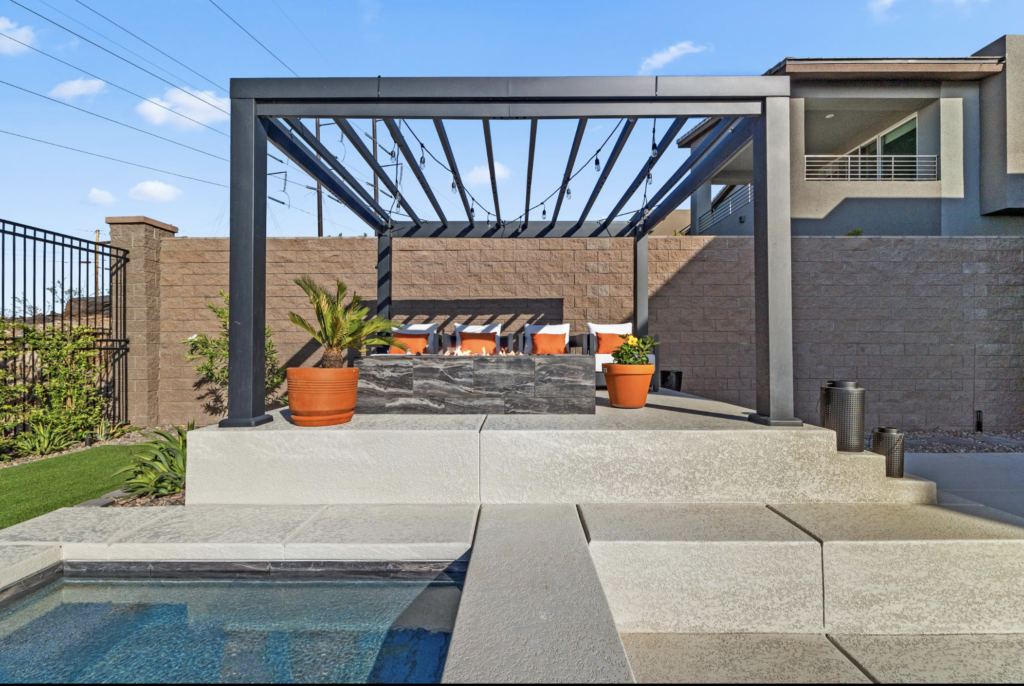Sustainable Solutions for the Desert City
Las Vegas, Nevada, known as the Entertainment Capital of the World, is a vibrant city characterized by its iconic skyline and extravagant structures. With its unique desert climate, constructing buildings in Las Vegas poses several challenges, including extreme temperatures and limited water resources. To tackle these issues and promote sustainable development, the city has witnessed a surge in the use of innovative building materials. This article delves into the diverse range of building materials employed in Las Vegas, highlighting their sustainability features and the positive impact they have on the city’s architecture.
Learn more about the leading golf communities which can offer you sustainable options for your Las Vegas home.
Adaptation to Desert Climate
The desert climate of Las Vegas demands a thoughtful selection of building materials that can withstand extreme heat and conserve energy. One popular choice is cool roofing, which reflects sunlight and reduces heat absorption, leading to lower cooling costs. Additionally, the use of highly efficient insulation materials, such as spray foam insulation and insulated concrete forms, helps maintain comfortable indoor temperatures while minimizing energy consumption.
Sustainable Construction Materials
In recent years, Las Vegas has witnessed a shift toward sustainable construction practices and materials. One such material is reclaimed wood, sourced from deconstructed buildings or repurposed structures, which adds a rustic charm to modern designs while reducing environmental impact. Furthermore, the city has embraced the use of recycled steel, which not only reduces construction waste but also offers structural integrity and durability.
Water-Efficient Solutions
Water scarcity is a significant concern in the arid landscape of Las Vegas, making water-efficient building materials essential. Xeriscaping, a landscaping technique that employs drought-tolerant plants and reduces irrigation needs, has gained popularity in the region. Additionally, permeable pavement materials, like porous concrete or interlocking pavers, allow rainwater to infiltrate the ground, replenishing the aquifer and reducing stormwater runoff.
Energy-Efficient Glazing Systems
The intense desert sunlight poses challenges for maintaining comfortable indoor environments and reducing energy consumption. To address these issues, Las Vegas has embraced advanced glazing systems. Low-E (low-emissivity) glass coatings significantly reduce heat gain while allowing natural light to illuminate interior spaces. Similarly, dynamic glazing adjusts tint levels based on sunlight intensity, reducing the need for artificial lighting and minimizing cooling requirements.
Sustainable Concrete Alternatives
Concrete is a widely used construction material, but its production generates a substantial amount of carbon dioxide emissions. In response, Las Vegas has explored alternative eco-friendly options. One such material is photocatalytic concrete, which uses a photocatalyst that reacts with sunlight to break down pollutants in the air. Additionally, incorporating industrial by-products like fly ash or slag in concrete mixtures reduces carbon emissions and enhances durability.
Solar Power Integration
Las Vegas, with its abundant sunshine, has harnessed the power of solar energy to reduce its reliance on conventional energy sources. The city encourages the integration of solar panels in building designs, enabling them to generate clean electricity. Solar photovoltaic panels on rooftops or parking structures contribute to the city’s renewable energy goals, reducing carbon footprint and utility costs.
Las Vegas, Nevada, a city known for its glitz and glamor, is also making significant strides in sustainable architecture and construction practices. From energy-efficient glazing systems to water-conserving landscapes, Las Vegas embraces innovative building materials that address the unique challenges posed by the desert climate. By incorporating these sustainable solutions, the city not only reduces its environmental impact but also sets an example for other urban centers to follow. As a globally renowned destination, Las Vegas demonstrates that a commitment to sustainable construction can go hand in hand with exceptional design and development.


